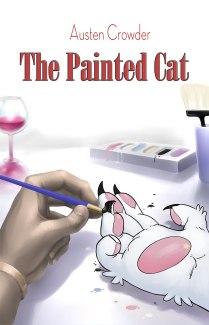Pet Noir, by Pati Nagle – book review by Fred Patten.
by Pup Matthias
Submitted by Fred Patten, Furry’s favorite historian and reviewer.
Cedar Crest, NM, Book View Café/Evennight Books, August 2013, trade paperback $14.39 (iii + 180 [+ 1] pages), Kindle $4.99.
In an undated far future, Leon is a kitten biomodified to talk and with an opposable thumb. Here he’s being taken by his handler at four weeks old from the industrial lab where he was born to his new home, in a cat carrier:
“I could just see his face if I pressed up against the wire. He watched me, looking kind of wary.
‘So what’s this Gamma Station?’
‘It’s a transportation hub out near Cygsee Four. It’s where I live and work.’
‘Sounds boring.’
‘No, it’s a nice place. You’ll like it.’
‘Cygsee Four. That’s Cygnius 61 C IV, right?’
‘Yes.’
‘That’s in the middle of nowhere.’
‘Nowhere’s a relative term, Leon. It’s got a lot to offer. Better than living in a lab.’
‘Got elephants?’
‘Well, no. But there’s a nice park. You can run on the green grass.’” (pgs. 3-4)
Leon has been modified to become an undercover detective on Gamma Station, a smaller transportation hub to the outer space colonies. Smuggling of bioenhancers has been taking place, and the smugglers have escaped detection so far.



 The first edition of A Whisper of Wings was arguably the first professional furry specialty press book ever published, by Vision Novels in October 1999. Anything before that was really a fanzine calling itself a book.
The first edition of A Whisper of Wings was arguably the first professional furry specialty press book ever published, by Vision Novels in October 1999. Anything before that was really a fanzine calling itself a book.
 45 pages), Kindle $2.99.
45 pages), Kindle $2.99.

